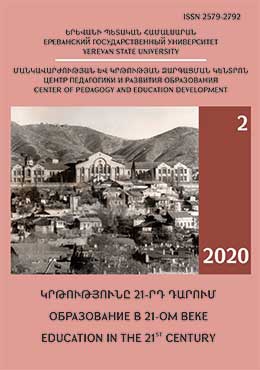BODILY CULTURE AND BODILY EDUCATION OF HUMAN
DOI:
https://doi.org/10.46991/educ-21st-century.v2i4.10891Keywords:
Body, Physique, Movement culture, Bodily education.Abstract
Today, the corporeal has taken a solid place in public space. The active position of a person
in relation to his body and physical perfection is concretized in different types of behavior, the
body actively participates in various kinds of demonstrations, games, and competitions. For
example, some people are consciously engaged in fitness, aerobics, bodybuilding, dancing, yoga,
shaping, making tattoo, piercing, doing plastic surgery, visiting solarium, saunas, and massage
centers for the optimal body care. The values of body formation should include health preservation
and strengthening, muscle development, optimal preparation for the needs of military service, the
recovery of the lost body functions, the formation of movement culture, physique. Such
approaches must go hand in hand with the development of intelligence, memory, thinking,
creativity, aesthetic and moral qualities.
Physical education and sports training refer to those areas in which, like nowhere else, human
corporeality is manifested in its cultural aspect.
80
The primary purpose of this research is to highlight the essence and content of the
phenomenon of bodily culture and bodily education of human through the prism of physical
education and sports training process. The article discusses and summarizes the values for the
formation of human corporeality, issues of bodily culture and bodily education relying on
pedagogical, philosophical, sociological literature sources. Some methods and techniques,
programs and concepts of bodily culture and bodily education are highlighted.
References
Быховская И. М., Человеческая телесность в социокультурном измерении:
традиции и современность, М.: РИО ГЦОЛИФК, 1993, 168 с.
Гессен С. И., Основы педагогики (введение в прикладную философию. – Берлин:
(пер. с нем.), М.: «Школа-пресс», 1995, 447 с.
Лубышева Л.И. Интерпретация Олимпизма в базовых смыслах спортивной
культуры // Теория и практика ФК, 2014, №8, с. 97.
Обухов Я. Л., Духовные «Гималаи» Европы // «Человек», 1993, №3, с. 89.
Оленкин Ю. В., Диалектика духовного и телесного в физической культуре,
Чебоксары: 2008, 311с.
Песталоцци И. Г., О телосложении как подготовке к опыту проведения
элементарной гимнастики в последовательном ряде физических упражнений, Издание И. Р.
Сейфарта-Бранденбург, 1873, с. 44.
Платон Античные мыслители об искусстве, М.: «Госиздат», 1938, с. 40-41, 56.
Столяров В. И., Философия спорта и телесности человека, М.: Университетская
книга, 2011, 766 с.
Octavio P. El ogro fїlantropico: historia y politica, Barcelona: 1979.
Vannier M., Foster M. Teaching Physical Education in Elementary Schools – London,
, p. 111.
Downloads
Published
How to Cite
Issue
Section
License

This work is licensed under a Creative Commons Attribution-NonCommercial 4.0 International License.

